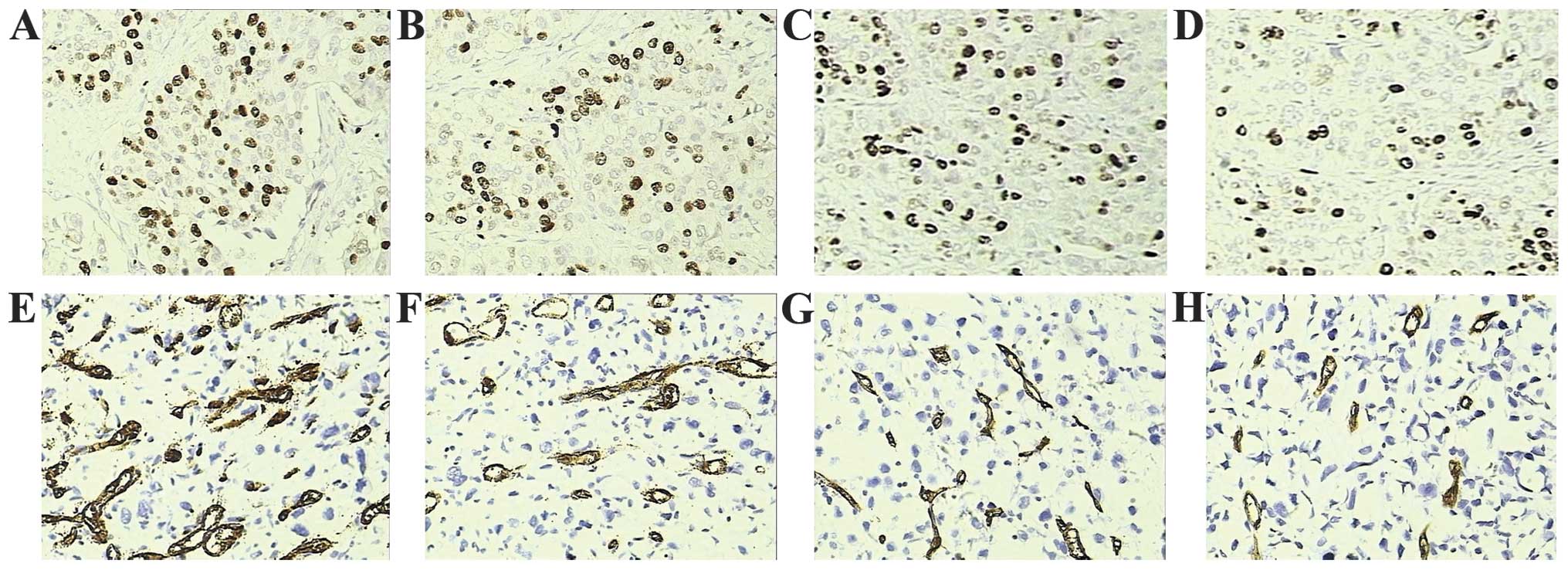In vitro and in vivo targeting of bladder carcinoma with metformin in combination with cisplatin
- Authors:
- Published online on: May 26, 2015 https://doi.org/10.3892/ol.2015.3267
- Pages: 975-981
Metrics: Total
Views: 0 (Spandidos Publications: | PMC Statistics: )
Total PDF Downloads: 0 (Spandidos Publications: | PMC Statistics: )
Abstract
Bladder cancer is the ninth most common carcinoma worldwide, and improving the sensitivity of this cancer to chemotherapy is a current clinical challenge. Metformin is a potentially useful therapeutic agent for the treatment of certain types of cancer. In the present study, metformin and cisplatin (a first‑line chemotherapeutic agent for the treatment of bladder cancer) were administered to T24 and BIU‑87 bladder cancer cells lines alone or in combination, prior to undergoing MTT assay and fluorescence‑activated cell sorting analysis to determine cell viability and cell cycle distribution, respectively. Western blotting was used to examine the expression of proteins associated with the AMP‑activated protein kinase (AMPK) and mammalian target of rapamycin (mTOR) signaling pathways. In addition, a xenograft model was constructed to evaluate the antitumor efficacy of metformin and cisplatin treatment, alone or in combination. Immunohistochemistry was performed to detect the expression levels of proteins associated with xenograft growth and angiogenesis. Furthermore, western blotting was performed to observe the expression of proteins associated with the AKT/mTOR signaling pathway in the xenograft model. The results demonstrated that the treatment of T24 and BIU‑87 cells with metformin or cisplatin resulted in decreased tumor cell proliferation. However, the joint application of metformin and cisplatin was significantly more effective than that of each compound alone (P<0.05). Similarly, cells more markedly accumulated in the sub‑G1 phase following joint treatment with metformin and cisplatin, compared with metformin or cisplatin treatment alone. In addition, human cell cycle signaling pathway western blotting arrays were performed, which identified the marked downregulation of phosphorylated (p)‑mTOR and unchanged expression of p‑AMPK, AMPK and mTOR following combined treatment with cisplatin and metformin. Concurrently, combined use of metformin and cisplatin markedly inhibited the growth and angiogenesis of xenografts generated from BIU‑87 cells. Immunohistochemical analysis revealed that downregulation of the expression of specific proteins associated with AMPK promoted xenograft growth and angiogenesis, while western blotting revealed inhibition of the AKT/mTOR signaling pathway in xenografts treated with metformin in combination with cisplatin. Overall, the results of the present study demonstrated that the concurrent administration of metformin and cisplatin may result in enhanced antitumor efficacy compared with that of one agent alone, thus, providing a potential novel therapeutic strategy for the treatment of bladder cell carcinoma.













